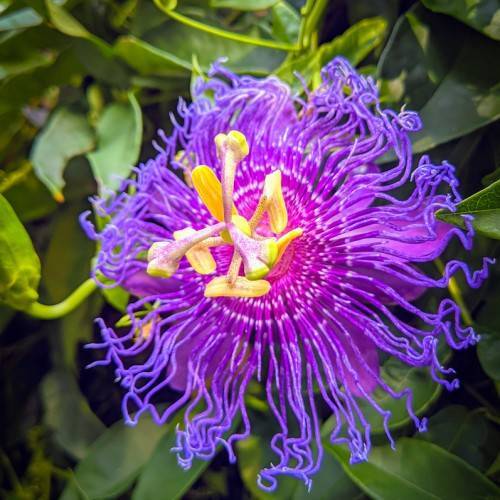
purple passionflower
Passiflora incarnata
Cycle:
Perennial
Watering:
Average
Hardiness Zone:
5 - 9
Flowers:
Flowers
Sun:
full sun
Fruits:
Fruits Ready In Summer
Edible:
Yes
Leaf:
Yes
Growth Rate:
Low
Maintenance:
Moderate
Drought Tolerant:
Yes
Tropical:
Yes
Care Level:
Medium
watering
The purple passionflower (Passiflora incarnata) is a tropical climbing vine that loves warm climates and moist, well-drained soil. In general, this plant requires moderate watering. It should be watered once or twice a week and allowed to dry out slightly between waterings. During periods of extreme heat, this plant may require more frequent watering every few days. In cooler temperatures and during winter dormancy, water less frequently and ensure the soil has fully dried out before the next watering.
sunlight
The purple passionflower requires full sun in order to bloom and bear fruit. For best results, it should be exposed to direct sunlight for 5 to 6 hours per day. If it does not receive enough sunshine, it will struggle to bloom. It does best when planted in an area that receives plenty of sun during the summer months and some relief during the winter.
pruning
Purple passionflower (Passiflora incarnata) should be pruned annually in the late winter or early spring. Pruning helps to rejuvenate the plant and promote more bloom in the summer. As with many plants, annual pruning encourages new growth when old growth becomes weak or overgrown. To prune a purple passionflower, remove any dead, broken or weak looking stems, as well as cutting a couple of the older and thicker stems back to a few inches from the soil.
